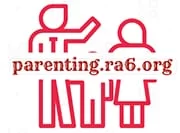Primary Physical Custody: Benefits and Rights for Custodial Parents Explained
When parents separate or divorce, one of the most important decisions they’ll face is how to divide the responsibilities and time spent with their children. In family law, various forms of child custody arrangements come into play, with “primary physical custody” being a term that often arises.
This article will demystify the concept of primary physical custody, explain its benefits, and outline the rights it entails for custodial parents.

Table of Contents
What Is Primary Physical Custody?
![]()
Primary physical custody refers to the arrangement where a child resides with one parent for the majority of the time. This parent is known as the primary custodial parent. The other parent, often called the non-custodial parent, may have visitation rights or parenting time scheduled. It’s important to note that primary physical custody does not necessarily mean exclusive custody. Both parents can still play significant roles in their child’s life, but the child has a primary residence with one parent.
Primary Physical Custody Meaning Explained
![]()
The core meaning of primary physical custody lies in where the child spends most of their time. It’s about the child’s daily care, including where they sleep, eat, and do schoolwork. The primary custodial parent is responsible for the day-to-day decisions and routine care of the child. Even though the term “physical” is used, it’s not just about the physical location of the child, but also involves the practical aspects of raising the child.
Benefits of Primary Physical Custody
![]()
Opting for primary physical custody can bring several advantages for both the child and the parent. Here are some benefits that this custody arrangement can offer:
- Stability and Consistency: Children often thrive on routine and stability. Having a primary residence can provide a consistent environment, which is beneficial for the child’s emotional and psychological well-being.
- Clear Responsibilities: With primary physical custody, it’s clear who is responsible for the day-to-day care of the child. This can simplify decision-making and reduce conflicts between parents.
- Focused Parenting Time: For the non-custodial parent, having a set schedule for visitation can allow them to plan and make the most of their time with the child.
- Legal Clarity: A custody order outlining primary physical custody provides a legal framework that both parents must follow, which can help prevent misunderstandings and disputes.
What Are My Rights with Primary Physical Custody?
![]()
As the primary custodial parent, you have specific rights that are important to understand. These rights can include:
- Decision-Making: You have the authority to make important decisions regarding the child’s daily life, such as their diet, routine, and minor medical care.
- Education and Health Care: You are typically the one who decides on the child’s schooling and health care providers, and you have access to school and medical records.
- Residence: You have the right to determine the child’s primary residence, within any geographical limits set by the court.
- Travel: You may have the right to travel with the child, though this can be subject to any stipulations in the custody agreement or court order.
It’s important to remember that these rights come with the responsibility to act in the child’s best interests and to involve the other parent in major decisions when joint legal custody is shared.
Navigating the Legal Landscape of Primary Physical Custody
![]()
Securing primary physical custody involves a legal process that may differ depending on your jurisdiction. Generally, the court will consider several factors to determine what is in the best interest of the child, including:
- The child’s age and physical and emotional needs
- The ability of each parent to provide for the child
- Each parent’s physical and mental health
- The child’s established living pattern (school, home, community)
- The child’s preference, if they are of a suitable age and maturity
Parents can reach an agreement on primary physical custody through negotiation or mediation, or the court can make a determination if an agreement cannot be reached.
Challenges and Considerations
![]()
While primary physical custody has its benefits, it also brings challenges that parents should consider:
- Coparenting: The primary custodial parent must still maintain an effective coparenting relationship with the non-custodial parent.
- Flexibility: Life circumstances change, and the custody arrangement may need to adapt over time.
- Child’s Needs: As the child grows, their needs and preferences may shift, which could impact the appropriateness of the current custody arrangement.
Additionally, the non-custodial parent may feel left out or struggle with not being the primary caregiver. It’s essential for both parents to communicate openly and prioritize the child’s well-being to mitigate these challenges.
Case Studies and Statistics
![]()
Real-life examples and data can help illuminate the impacts of primary physical custody. For instance, studies have shown that children in stable, consistent living situations tend to perform better academically and exhibit fewer behavioral issues. Furthermore, case studies demonstrate that when parents work collaboratively within the primary physical custody framework, children can maintain strong bonds with both parents.
Statistics also reveal trends in custody arrangements. According to recent data, mothers are more likely to be awarded primary physical custody, but there is a growing number of cases where fathers are granted this role, reflecting changing societal norms and legal considerations.
Frequently Asked Questions
![]()
How does a court decide who gets primary physical custody?
Courts consider many factors, such as the child’s age, the child’s relationship with each parent, each parent’s living situation, and each parent’s ability to care for the child. The main goal is to serve the best interests of the child.
Can primary physical custody be joint?
No, primary physical custody is typically awarded to one parent. However, parents can have joint legal custody, meaning they both have a say in major decisions about the child’s life.
What is the difference between primary physical custody and sole custody?
Primary physical custody means the child lives with one parent most of the time but the other parent usually has visitation rights. Sole custody means one parent has both physical and legal custody, and the other parent may have limited or no visitation rights.
Can the parent with primary physical custody move away with the child?
It depends on the custody agreement and state laws. The custodial parent may need to get permission from the other parent or the court before moving, especially if the move would impact the visitation schedule.
How can a parent obtain primary physical custody?
A parent can obtain primary physical custody by negotiating an agreement with the other parent or by going to court and letting a judge decide. It’s often best to work with a lawyer who specializes in family law.
Does having primary physical custody affect child support?
Yes, usually the parent with primary physical custody receives child support from the non-custodial parent to help cover the costs of raising the child.
Can primary physical custody be changed?
Yes, custody arrangements can be modified if there’s a significant change in circumstances, like a change in a parent’s job, relocation, or if it’s in the child’s best interest.
What if the parent with primary physical custody is not following the custody agreement?
The other parent can file a motion with the court to enforce the custody agreement. The court may then take steps to ensure the agreement is followed.
How does primary physical custody work if the parents live in different states?
Interstate custody can be complex, and the courts generally follow the Uniform Child Custody Jurisdiction and Enforcement Act (UCCJEA) to determine which state has jurisdiction over the custody case. It’s important to get legal advice in such situations.
Can a child decide which parent to live with in a primary physical custody arrangement?
A child’s preference may be considered by the court, especially if the child is older and mature enough to express a reasoned choice. However, the court’s decision will still be based on what it deems to be in the child’s best interest.
Conclusion: Putting Your Child First
![]()
Primary physical custody is a custody arrangement that, when implemented with care and consideration, can support a child’s growth and well-being following their parents’ separation or divorce. It provides a stable environment for the child while allowing both parents to maintain a meaningful relationship with their child. As a primary custodial parent, you’ll have certain rights and responsibilities that are crucial for the child’s day-to-day life.
It’s essential to navigate the legal aspects of establishing primary physical custody with the child’s best interests at heart. Whether you’re considering pursuing primary physical custody or already have it, understanding your rights and the benefits of this arrangement can help you create a positive and supportive environment for your child.
Remember, every family’s situation is unique, and what works for one may not work for another. It’s important to seek legal advice and support to ensure that any custody arrangement aligns with your child’s needs and legal requirements. With the right approach, primary physical custody can be a cornerstone for a stable and nurturing upbringing for your child.
Originally posted 2023-01-29 09:48:14.
